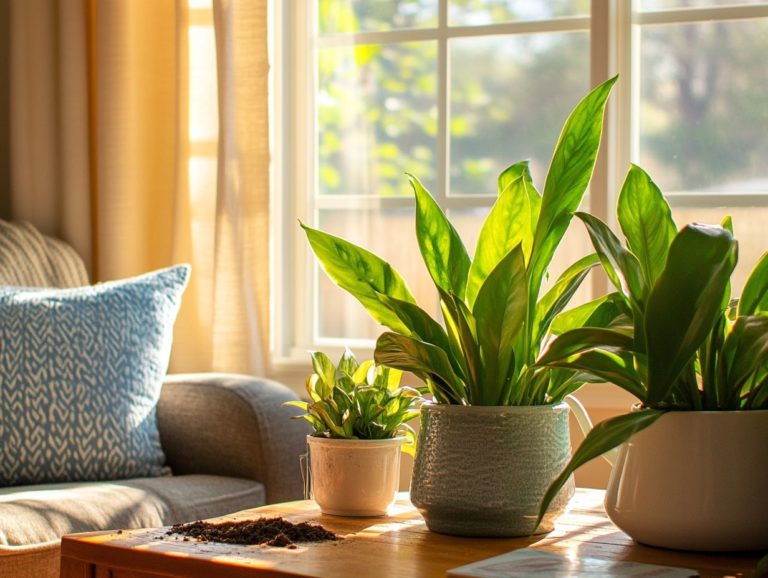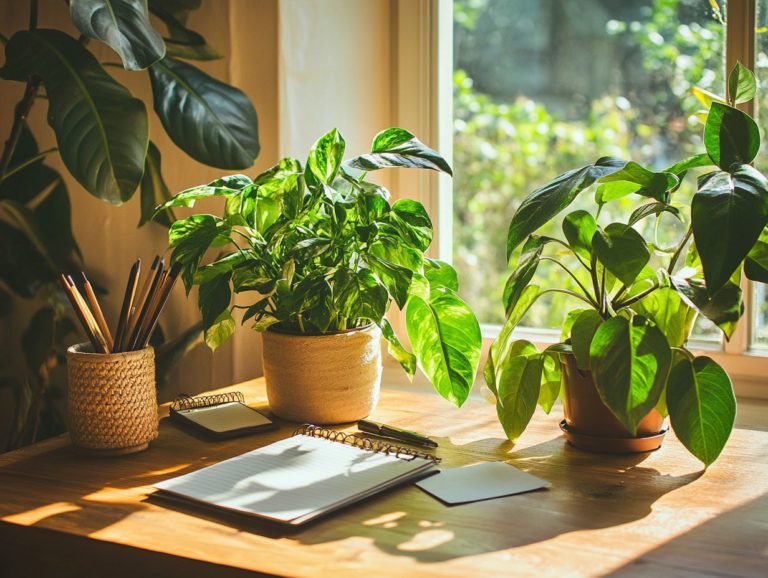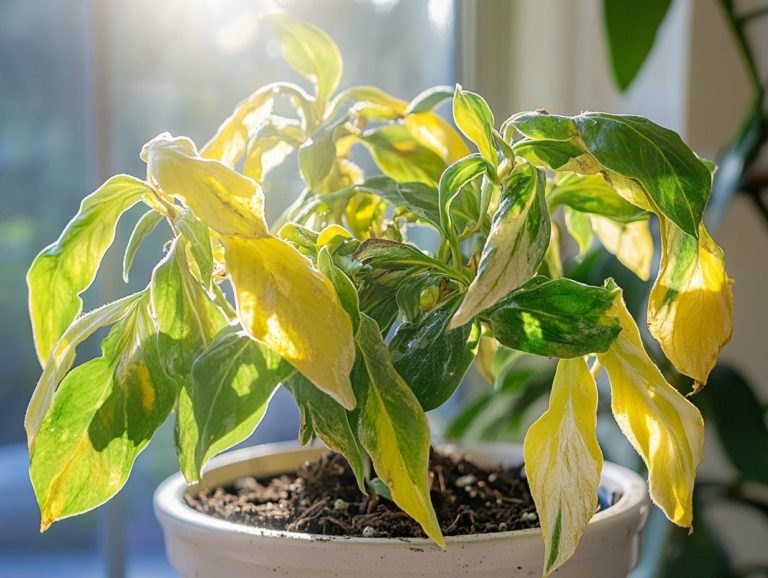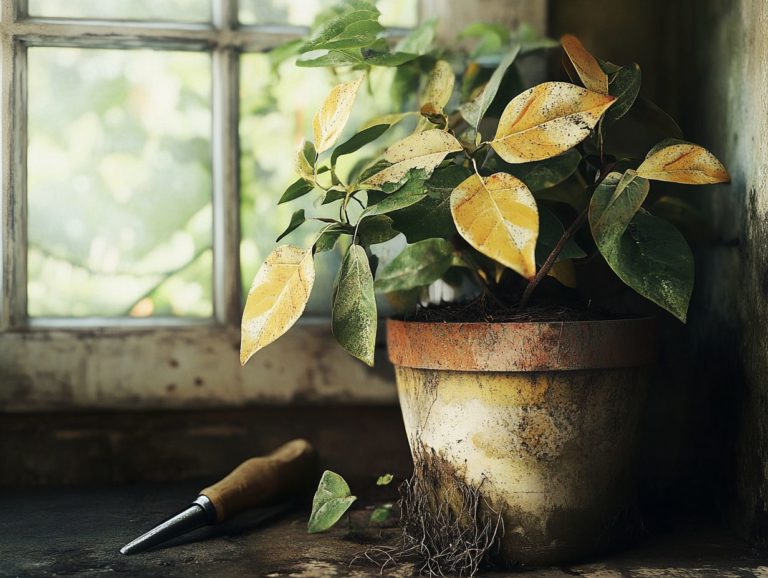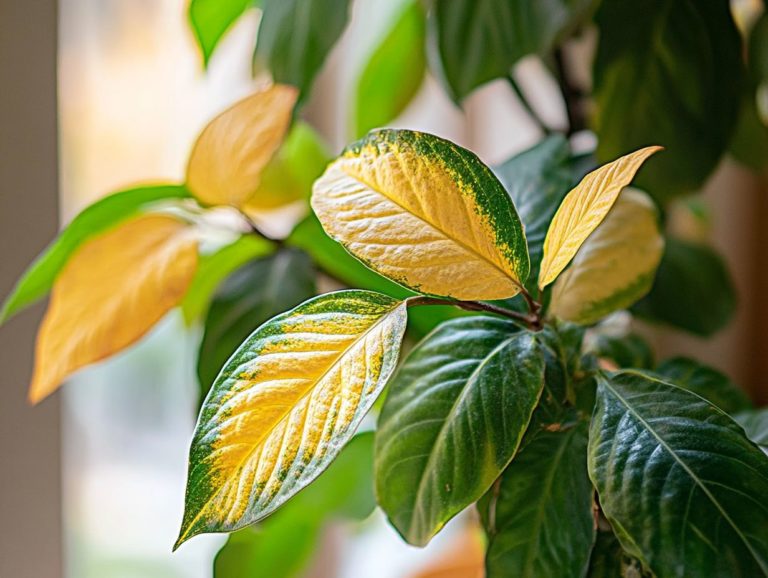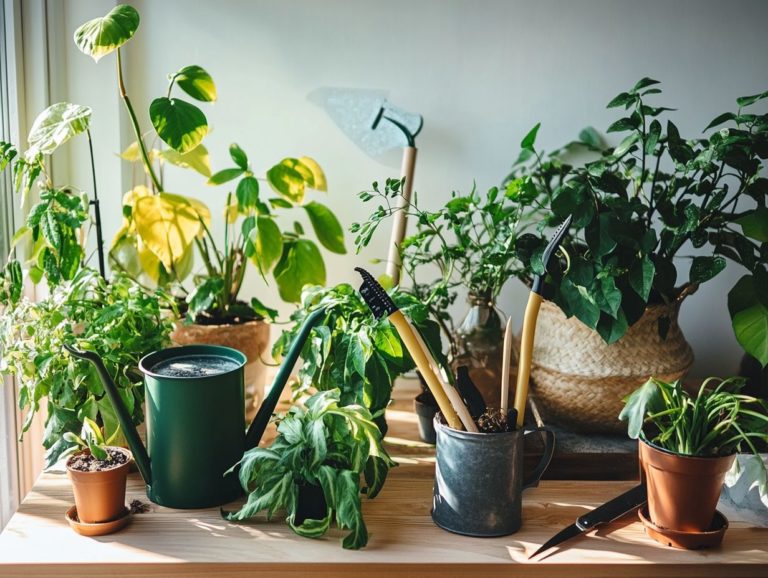Managing Indoor Plant Temperature Fluctuations
Maintaining the ideal temperature for your indoor plants is vital for their growth and overall well-being. Temperature fluctuations can induce stress and impede development. Therefore, it s essential to understand the effects of temperature on your plants.
Get ready to dive into the world of indoor gardening! We ll explore temperature changes, signs of stress in plants, and how to keep them thriving.
Contents
- Key Takeaways:
- The Importance of Temperature for Indoor Plants
- Common Causes of Temperature Fluctuations
- Signs of Temperature Stress in Plants
- Strategies for Managing Temperature Fluctuations
- Preventing Temperature Fluctuations
- Frequently Asked Questions
- What causes indoor plant temperature fluctuations?
- How do I know if my indoor plants are being affected by temperature fluctuations?
- What is the ideal temperature range for indoor plants?
- How can I manage temperature fluctuations in my indoor space?
- Can temperature fluctuations harm my indoor plants?
- Are there any other factors besides temperature that can affect my indoor plants?
Key Takeaways:
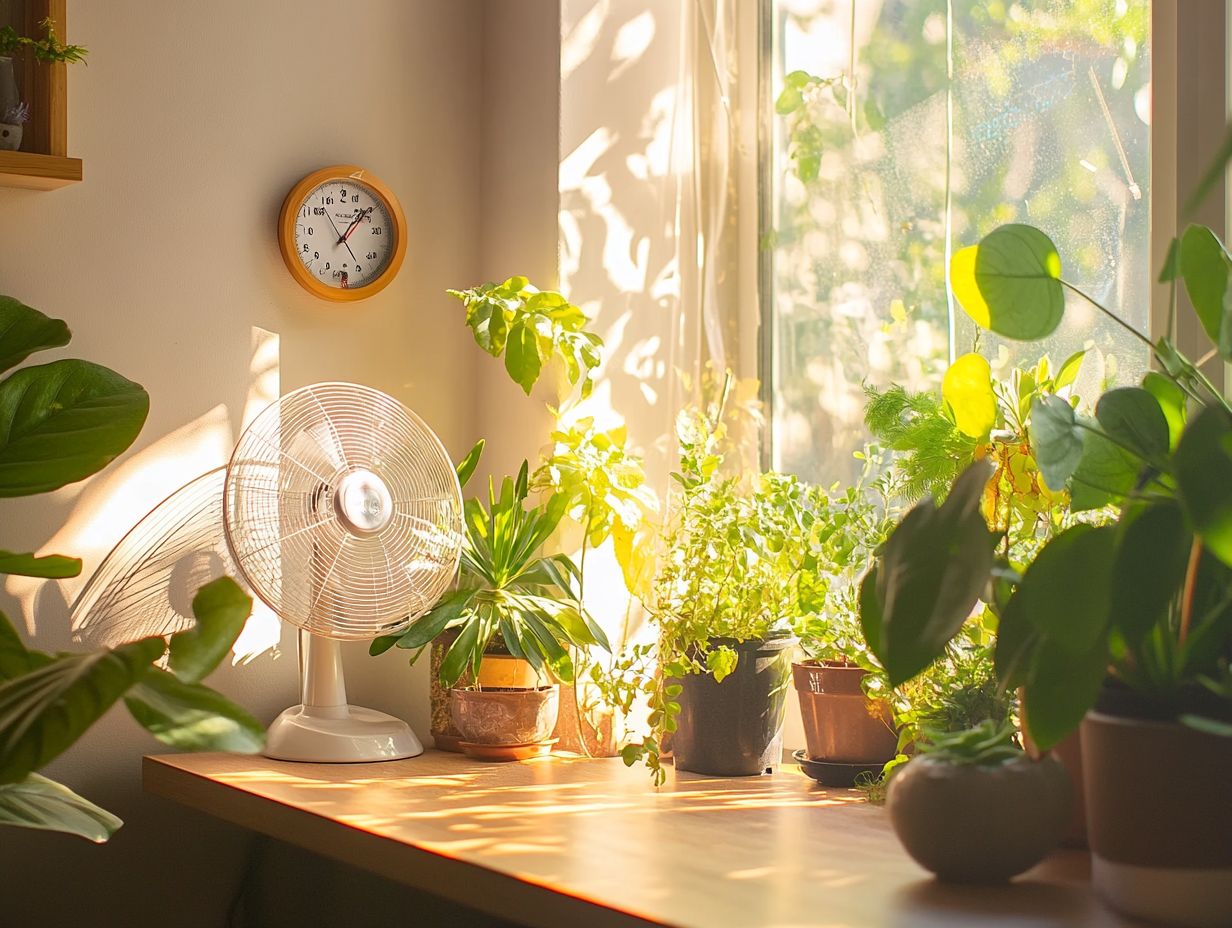
- 1. Manage temperature to ensure plant health.
- 2. Recognize stress signs caused by temperature changes.
- 3. Use simple strategies to create a stable environment.
The Importance of Temperature for Indoor Plants
Understanding the significance of temperature for your indoor plants is essential, particularly during the winter months when conditions can shift dramatically. Proper temperature regulation is key to fostering optimal growth and health for a variety of houseplants, including tropical favorites like the Peace Lily and Ficus Elastica Ruby.
Temperature profoundly influences their watering schedules, humidity requirements, and how plants adjust to their environment. As a dedicated plant parent, be attentive to temperature extremes. Watch out for drafts and air conditioning, as these can impact your indoor environment.
This awareness will help you prevent common issues such as overwatering and root rot, ensuring your plants thrive throughout the season.
Effects on Growth and Health
The impact of temperature on the growth and health of your indoor plants is immense, as it plays a crucial role in their photosynthesis the process plants use to convert sunlight into energy and respiration.
Different temperature ranges can greatly influence the growth rates and overall vitality of various species. For instance, ferns thrive in cooler, humid environments, often flourishing at temperatures between 60-70 F. This range helps maintain their lush foliage and improves moisture retention in the soil.
On the other hand, cacti prefer warmer temperatures, typically ranging from 70-100 F, which allows them to efficiently absorb sunlight while requiring significantly less water.
It s essential for you as a plant enthusiast to adjust your humidity and watering schedules accordingly. By doing so, you can ensure optimal conditions for each type of plant, ultimately nurturing a healthy indoor garden that flourishes, no matter the season.
Common Causes of Temperature Fluctuations
Temperature fluctuations in indoor environments often arise from multiple environmental factors, such as heating and cooling systems, drafts, and the seasonal shifts that accompany winter.
By comprehending these influences, you can cultivate a more stable atmosphere for your indoor plants, thereby minimizing the risk of stress and potential damage.
Environmental Factors and Human Influence
Environmental factors wield considerable influence over your indoor plants, with elements like direct sunlight, air conditioning, and heating systems playing pivotal roles in their growth and well-being.
Understanding how these variables interact is essential for any indoor gardener. For instance, air conditioning units tend to lower humidity levels, producing a dry atmosphere that can stress your plants, especially those that flourish in more humid conditions.
Ensure your plants get the right amount of sunlight. This is crucial to counteract the chilly air circulated by the system. Proper sunlight exposure not only helps maintain an optimal temperature but also enhances your plants’ ability to photosynthesize effectively, fostering healthier growth patterns.
By skillfully balancing these environmental factors, you can cultivate a thriving indoor ecosystem that nurtures your botanical companions.
Signs of Temperature Stress in Plants
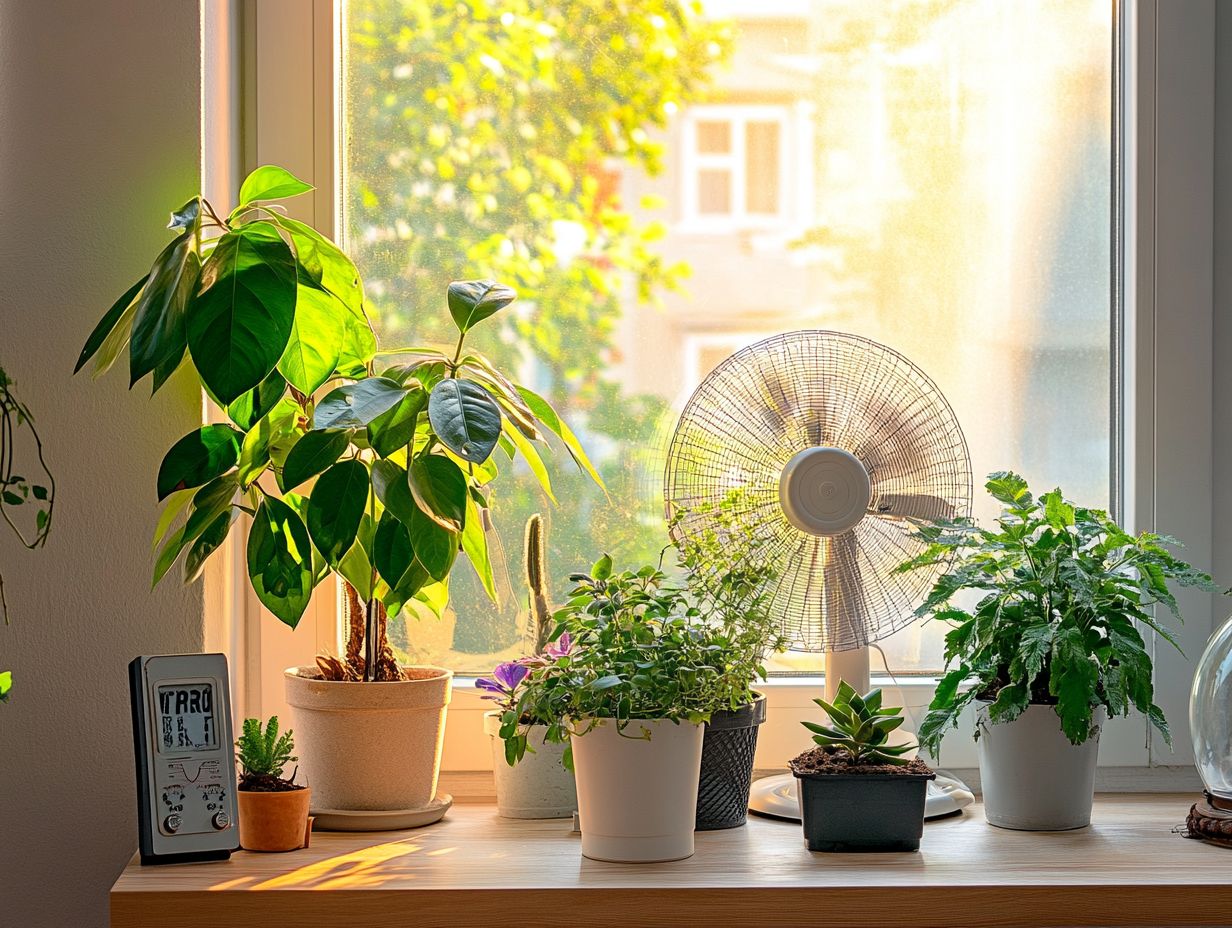
Recognizing the signs of temperature stress in your indoor plants is crucial for preserving their health and preventing long-term damage during unfavorable conditions. You might notice symptoms like wilting, yellowing leaves, or even root rot. All of these indicate that your plants are struggling to acclimate to their environment.
Staying vigilant will ensure your green companions thrive, even when conditions aren’t ideal.
Identifying Symptoms and Causes
Identifying the symptoms and causes of temperature stress requires a keen eye for your plants’ health and the environmental conditions that influence moisture and humidity.
Understanding the interaction of these factors is essential for keeping your indoor greens thriving, especially during winter months when temperatures can swing dramatically. For example, low humidity combined with cold drafts may result in stunted growth, wilting, or even leaf drop.
It s vital for you, as a caregiver, to monitor these conditions with tools like the Sustee or GrowProbe. These devices provide real-time insights into soil moisture and help ensure optimal growing conditions.
By closely examining these connections, you can create a healthier indoor environment and effectively prevent the negative impacts of temperature stress on your beloved plants.
Strategies for Managing Temperature Fluctuations
Implementing effective strategies to manage temperature fluctuations is essential for the health of your indoor plants, particularly as you prepare for winter, when conditions can become harsh and unpredictable.
- Fine-tune your heating and cooling systems to maintain stable temperatures.
- Utilize grow lights for optimal illumination.
- Offer appropriate shade and insulation to protect your plants.
These measures will help create a stable environment for your plants, whether it’s a delicate Caladium or a resilient Cactus.
Adjusting Heating and Cooling Systems
Adjusting your heating and cooling systems is one of the most effective strategies for managing temperature for your plants. This ensures they thrive in a stable environment during those chilly winter months.
By carefully fine-tuning these systems, you can create an optimal climate that supports healthy growth and helps prevent stress-related issues. For instance, using programmable thermostats allows you to maintain consistent temperatures while minimizing extreme fluctuations.
Avoid placing your plants directly in the path of heating vents or air conditioning units, as these unintended drafts can lead to leaf curl or wilting.
Incorporating humidifiers with traditional heating systems can counteract the drying effects of heat. This promotes a balanced humidity level that s especially beneficial for plants like ferns or tropical species.
By monitoring humidity with hygrometers and adjusting your HVAC settings as needed, you can ensure your plants flourish year-round, even in the challenging winter conditions.
Utilizing Shade and Insulation
Effectively using shade and insulation can significantly enhance your temperature management for indoor plants, especially during extreme shifts in temperature.
Consider techniques like hanging lightweight curtains or strategically placing tall plants to create natural shade. This approach protects your delicate foliage from both harsh sunlight and the chill of colder temperatures.
These methods not only shield your plants from blistering heat but also help maintain a consistent, comfortable temperature by reducing the cooling effects of air conditioning.
Using reflective materials or light-colored pots can also boost insulation, giving your plants the ideal conditions to thrive, no matter the weather outside.
Your plants deserve the best! Prioritizing temperature management will ensure they remain healthy and vibrant.
Preventing Temperature Fluctuations
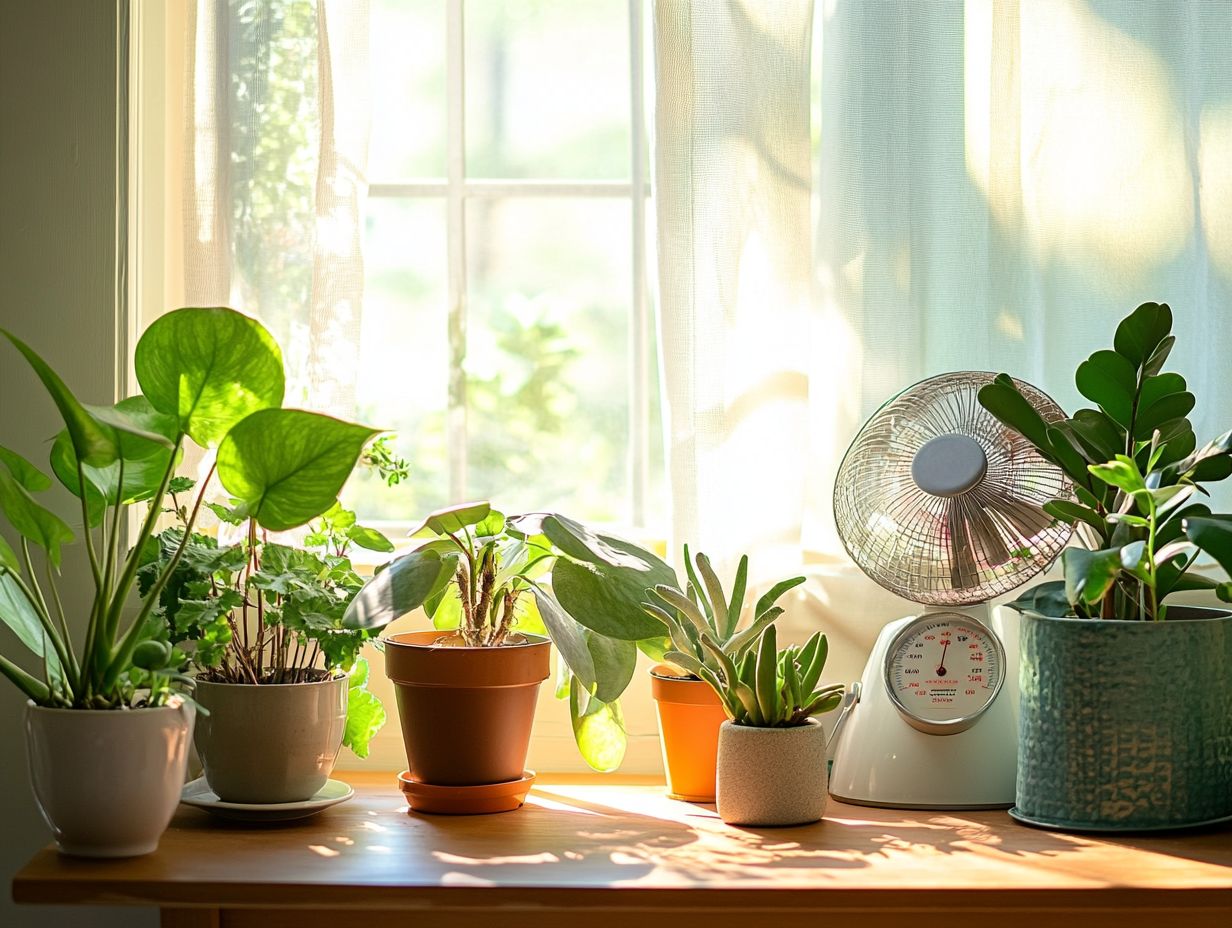
Preventing temperature fluctuations is essential for creating a stable environment for your indoor plants, especially during winter when conditions can change unpredictably.
Mindful plant care helps you choose the right species. This leads to a healthier indoor ecosystem that thrives.
Creating a Stable Environment
Creating a stable environment for your plants requires thoughtful attention to humidity levels and temperature control.
Use various monitoring tools to keep track of your plants’ needs. A hygrometer measures the moisture in the air, while thermometers help you maintain the ideal temperature range for each specific plant type.
Some plants enjoy warm conditions, while others prefer a cooler climate. Understanding these needs is vital.
Incorporating techniques like humidifiers or dehumidifiers can adjust moisture levels effectively. Place grow lights strategically to give your plants the light they need without risking overheating.
Regularly check soil moisture and adjust your watering routines according to each plant s demands. This enhances your nurturing approach and allows you to cultivate a thriving indoor garden.
Choosing Appropriate Plant Species
Choosing the right plant species that can handle temperature fluctuations is vital for indoor gardening success, especially as winter approaches.
When you select appropriate plants, you consider their specific care requirements. This significantly eases the burden of maintaining a healthy indoor garden during colder months.
Tropical plants like pothos and snake plants thrive in warmer conditions and adapt beautifully to indoor settings. Ferns, such as the Boston fern, add lushness and humidity, making them fantastic companions in your home.
By understanding these needs, you can cultivate a resilient green space that flourishes throughout winter, allowing you to set aside seasonal worries about plant health and upkeep.
Frequently Asked Questions
What causes indoor plant temperature fluctuations?
Indoor plant temperature fluctuations can be caused by various factors, such as changes in the surrounding environment, improper plant placement, and inadequate ventilation or heating systems.
How do I know if my indoor plants are being affected by temperature fluctuations?
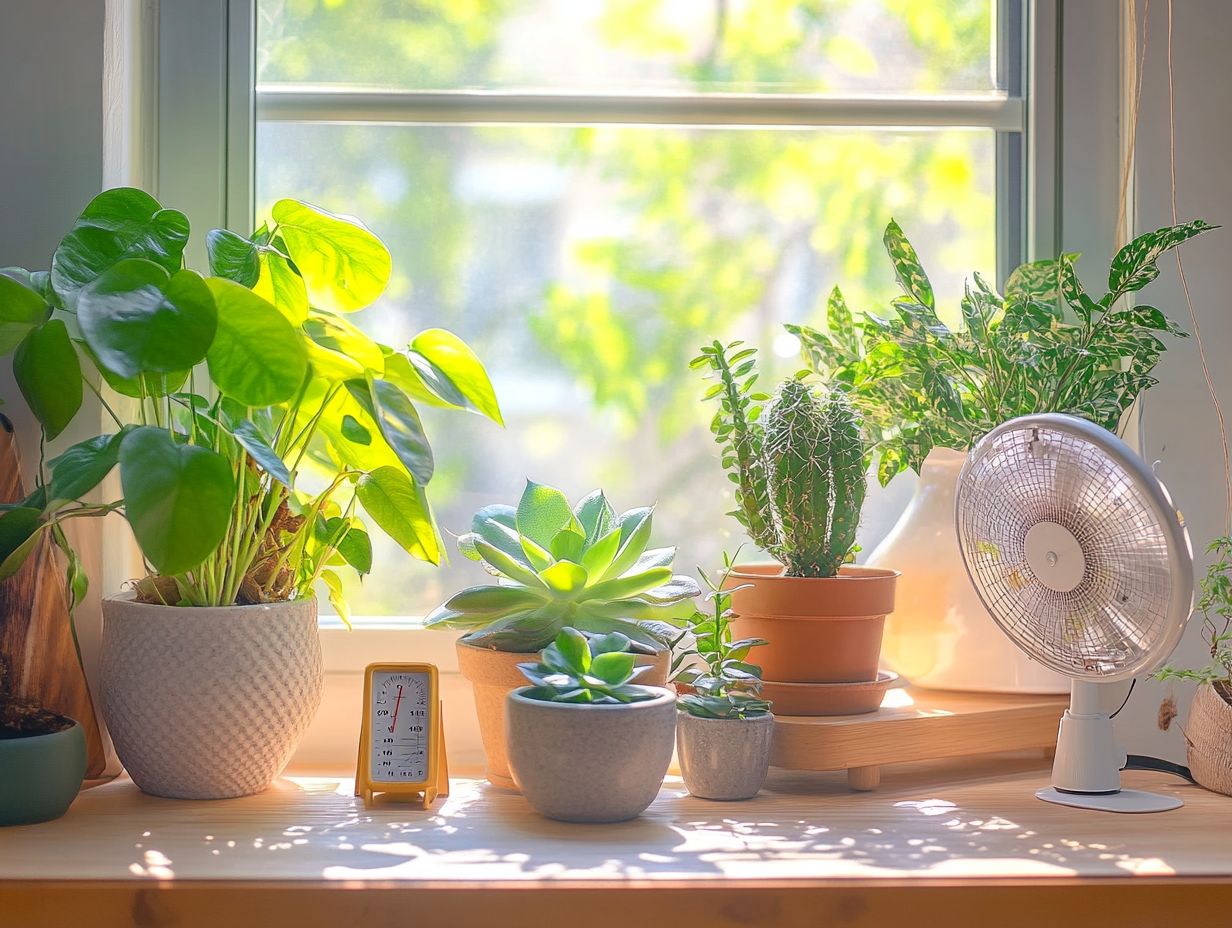
Signs of temperature fluctuations may include wilting, yellowing or browning of leaves, and stunted growth. Regularly check the temperature conditions in your indoor space to prevent further damage.
What is the ideal temperature range for indoor plants?
Most indoor plants thrive in temperatures between 65-75 F (18-24 C). However, some may have specific requirements, so it’s best to research each plant’s needs.
How can I manage temperature fluctuations in my indoor space?
To manage indoor plant temperature fluctuations, use a thermometer to monitor the temperature. Adjust the placement of your plants to avoid direct sunlight or drafts. Investing in a heating or cooling system can also help regulate the temperature.
Can temperature fluctuations harm my indoor plants?
Yes, extreme temperature changes can stress your indoor plants and cause serious damage. Maintaining a consistent and suitable temperature is essential for their health.
Are there any other factors besides temperature that can affect my indoor plants?
Yes, factors such as humidity, light exposure, and watering frequency also impact plant health. Consider all these elements to create a balanced environment for your plants to thrive.

